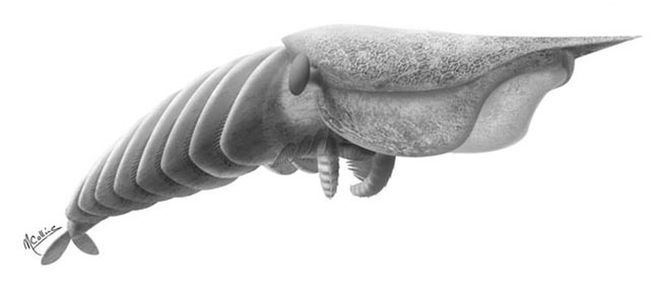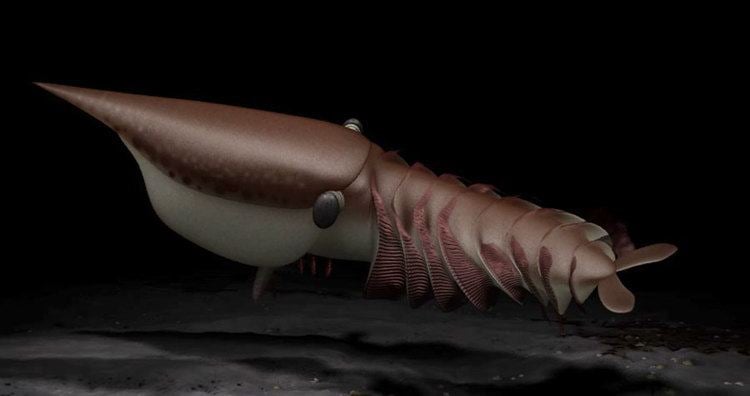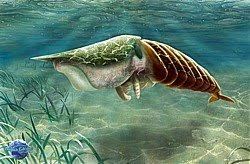Species †H. victoria Rank Genus | Scientific name Hurdia victoria | |
 | ||
Similar Anomalocaridid, Peytoia, Amplectobelua, Anomalocaris, Schinderhannes bartelsi | ||
Hurdia victoria is an extinct species of anomalocaridid that lived 505 million years ago during the Cambrian Period. It is part of the ancestral lineage that led to arthropods and is related to Anomalocaris.
Contents

Description

Hurdia was one of the largest organisms in the Cambrian oceans, reaching approximately 20 cm (0.66 feet) in length. Its head bore a pair of spiny claws (great appendages) which shovelled food into its pineapple-ring-like mouth. A hollow, spike-shaped shell protruded from the front of its head. The function of this organ remains mysterious; it cannot have been protective as there was no underlying soft tissue. Lateral lobes ran along the sides of the organisms, from which large gills were suspended.
Ecology

Hurdia was a predator, or possibly a scavenger. Its claws are flimsier than those of Anomalocaris, suggesting that it fed on less robust prey. It displayed a cosmopolitan distribution; it has been recovered from the Burgess shale as well as sites in the USA, China and Europe.
Taxonomic history
Hurdia was first described from fragmentary fossils by American paleontologist Charles Walcott in 1909, while cataloging the Burgess Shale. However, he mistakenly thought that the various body parts belonged to different creatures, which led to them being misclassified variously as a species of jellyfish, sea cucumber and its close relative Anomalocaris.
In the late 1990s, then-curator of the Royal Ontario Museum Desmond H. Collins connected the elements of the Hurdia animal, presenting his ideas in informal articles, but it was not until 2009, after three years of painstaking research, that the complete organism was reconstructed. Sixty-nine specimens of Hurdia are known from the Greater Phyllopod bed, where they comprise 0.13% of the community.
